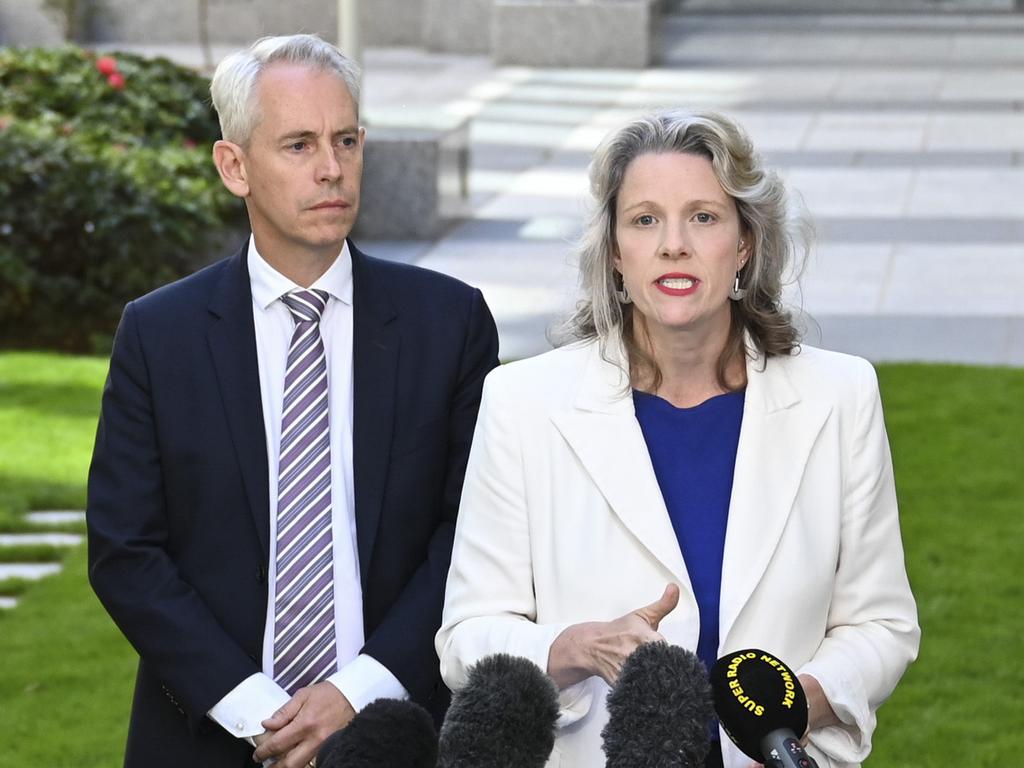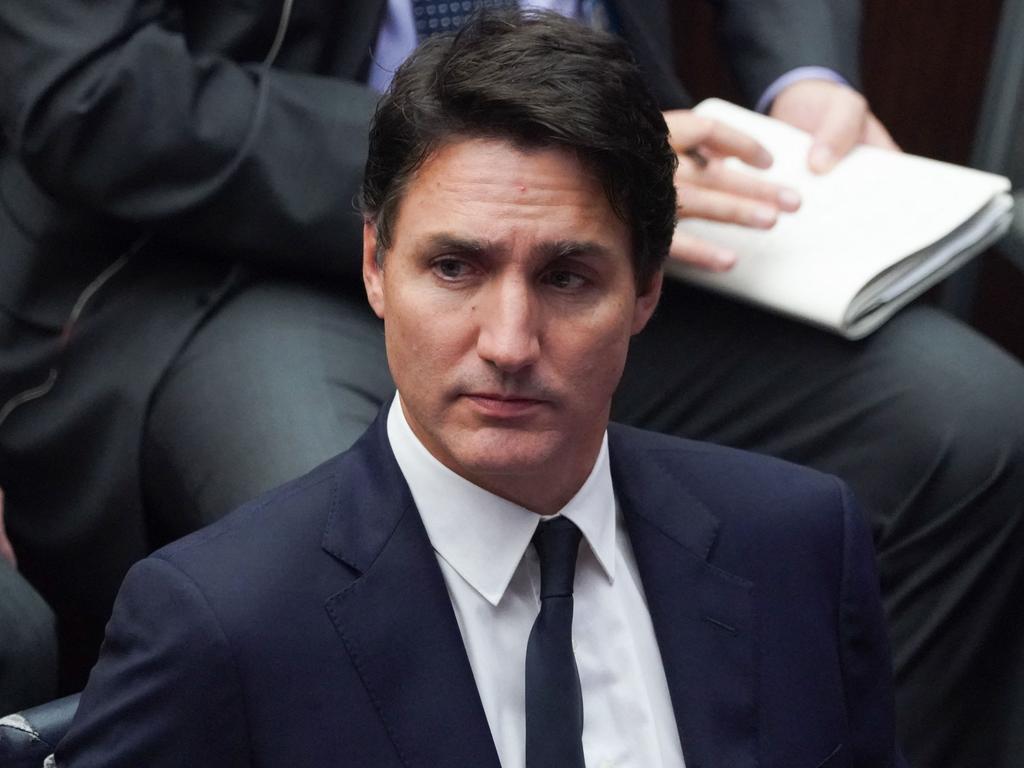ALP can’t muddle its way out of migration blunders


According to last year’s blurb, the program is designed “to address persistent and emerging skills shortages and to attract people with specialist skill sets that are difficult to find or develop in Australia”. Evidently, the program will help “build resilience, boost productivity and support our economy as it transitions to net-zero emissions”. These assertions are made without any evidence.
The program “also recognises the strong contribution all migrants make to social cohesion. It focuses on strengthening family and community bonds in Australia. It also demonstrates the government’s commitment to family reunification.”
My guess is the tone of this year’s announcement of the migration program may be a little less positive and unqualified. But the real issue is whether the permanent migration numbers actually matter that much compared with the inflow of temporary migrants on uncapped visas.
It also should be noted that almost two-thirds of those who secure permanent visas are already here on temporary ones, mainly students. Cutting back the permanent number has only a marginal impact on the total inflow compared with adjusting the temporary visa conditions.
It’s worth going through the numbers here to illustrate just how enormous the recent flow of migrants has been and the scant evidence that the numbers are returning to pre-Covid levels. The key is net overseas migration, the difference between long-term arrivals and long-term departures.
In the year ending in the September quarter last year, the NOM reached close to 550,000, the highest number ever recorded. It was 60 per cent above the previous year. The NOM contributed more than 80 per cent of the growth in the total population, which was also a record.
Home Affairs Minister Clare O’Neil has laid down some markers – she is very keen to avoid the term target – for NOM for this financial year and next. The numbers she nominates are 375,000 and 250,000, respectively.
It is close to arithmetically impossible for the first number to be achieved given what is already in the can. But even 250,000 is high by pre-Covid standards.
There is no doubt the Albanese government has made a complete hash of migration, both in relation to the flow of temporary migrants, particularly international students, and the handling of previously detained asylum-seekers. There is a real possibility that the voting public conflates these two issues but, in any case, they are both bad news for the government.
Survey after survey show growing voter disapproval of the size of our migrant intake.
As with other portfolio areas, there has been an ongoing attempt to blame the Coalition government for the problems – “a decade of neglect” is a term O’Neil frequently uses. For a while, Anthony Albanese claimed the population numbers would have been even higher under the Coalition’s pre-pandemic plans, working on the faulty assumption that these plans would not have been altered. The Prime Minister has gone quiet on this point recently.
Rather than address the issue of the excessive NOM numbers head-on, O’Neil has taken an opaque and uncertain path to reduce them.
Having initially welcomed international students with open arms – even declaring that a motivation to secure permanent residence was completely acceptable – the government has been forced to change its tune by slightly shutting the gate. But the change of direction has been quite arbitrary: slowing the rate at which international student visas are processed, increasing the refusal rate for applicants from certain countries, enlisting the educational institutions in the process by threatening to downgrade their risk rating.
The new arrangements have favoured applicants from China – there is a certain irony there – and the Group of Eight established universities. Indeed, some of the numbers are quite staggering, with the University of Sydney having more than 30,000 international students enrolled, with many thousands, overwhelmingly from China, undertaking a masters in economics degree.
The University of Melbourne is planning to increase the number of international students accepted to study commerce/business by one-fifth. At the same time, some of the smaller universities and private educational providers are struggling and are laying off staff.
There is a seeming lack of strategy on the part of the government.
A key problem of the excessive migrant intake is the pressure on the housing market and the rapid rise in rents. One obvious solution is to clamp down on the numbers of international students that can be accepted by the institutions located in the main cities, particularly those close to the central business district. The fact so few of these institutions have shown any willingness to offer dedicated accommodation for their vast number of international students indicates their senior leaders regard this problem as not theirs.
Most universities have excess land and it would have been entirely feasible for halls of residence to have been built to accommodate international students.

The reality is that the government has come under considerable pressure to refrain from clamping down on temporary migrant numbers, from educational institutions to business groups. It is essentially a myth that international education is an export industry, notwithstanding its classification by the Australian Bureau of Statistics as such. Indeed, O’Neil has proudly declared “international education is our fourth largest export” and needs to be protected.
Exports are defined as goods and services produced in one country and sold to buyers in another. With international education, the expectation was that students would convert their foreign currency to pay the fees and living expenses while studying here.
The reality is very different. While some initial fees may be paid from abroad, most international students work while studying to cover their living expenses and further fees. This is not an export activity. We don’t count the entry of temporary workers as an export.
Even the most enthusiastic supporters of immigration now realise the uncontrolled, post-Covid surge in migrant numbers has had many downsides, including adding to the ongoing inflationary pressures.
The Treasury’s resistance to cutting back migrant numbers on the basis of dubious estimates of the fiscal gains from skilled permanent migrants has been extremely unhelpful.
The idea that the government can simply muddle its way out of its migration problems by a few hidden tweaks or increasing the charge for student visas is fanciful. Direct measures such as the Canadian approach of capping student numbers or denying the entry of accompanying persons for the vast majority of international students – the British way – should be actively considered.
Changing the permanent migrant numbers by a few thousand will simply not cut it.







One of the brief moments of excitement during the budget lockup is the discovery of the number for the permanent migration program planning level for the coming financial year. It is typically set down in one of the very many papers released on the day.